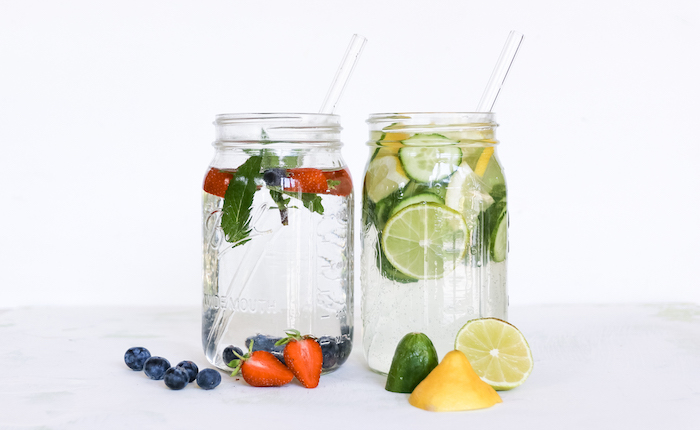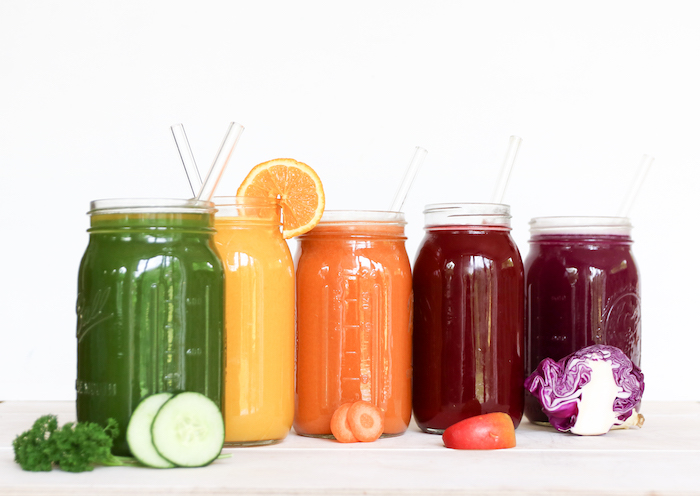Fasting is Not a Fad
If you think that fasting is something unnatural that’s too extreme for your body, this article invites you to enlighten yourself. In fact, we know for certain that early man actually lived alternating between periods of eating and fasting. Poor harvests meant that people had to divide their food and were met with hunger on a fairly regular basis.
So in a way, fasting is in our genes – and in contrast, a constantly available excess of food is a completely unfamiliar situation for us as humans in terms of developmental history, which in many cases goes so far as to cause significant problems.
And fasting also has a long tradition in most cultures. All major religions use fasting periods for inner reflection and spiritual contemplation.

Fasting is More Than Just Eating Nothing
In fact, fasting is experiencing a new upswing these days. Many use a fasting cure in the spring to help get rid of extra pounds, to purge, and to start the warm seasons with new vitality. Also, scientists have been able to prove through their research that fasting has multiple positive aspects on both a physical and psychological level.
-
Cleaning and regeneration
Voluntarily giving up food offers our body so much more than hunger pangs and shedding pounds. We give our digestive system a break and the opportunity to cleanse and regenerate. For the intestinal mucosa, this time out is a blessing because for once it can finally take care of itself.
-
Recycling – Autophagy
This was first demonstrated in 2016 by Japanese cell biologist Yoshinori Ohsumi, for which he was awarded the Nobel Prize in Physiology and Medicine. This cell recycling process is called AUTOPHAGY. Recent studies indicate that even viruses are recognized, killed and disposed of in the process (1).
Are you interessted in gaining a comprehensive understanding of the health benefits of a plant-based diet? Download the curriculum for our Holistic Nutrition Coach training program.
Fasting – Methods
Fasting can be practiced in a wide variety of ways:
- Water fasting – intake of pure water alone
- Fasting according to Otto Buchinger – unsweetened tea, water, a freshly squeezed vegetable juice, and a vegetable broth/li>
- Fasting according to Hildegard von Bingen – vegetable broth with ground meal, steamed apples, fennel tea, exercise, and inner reflection
- Fasting according to Brian Clement – water, vegetable and grass juices
- Intermittent fasting
In principle, anyone who is healthy can try a fasting cure independently at home. Those who take medication or are undergoing medical treatment should discuss their intention to fast with their doctor or alternative practitioner, or be sure to try the fasting cure in a group setting.

Fasting – Instructions
An ideal fasting schedule consists of three phases:
- The relief days
- The actual fasting phase
- The fast breaking
Relief Day
For one week before the actual fasting, it’s good to go without sugar, meat, milk products, gluten, alcohol, and coffee, and for the last 2 days before fasting, to eat only light meals with plenty of fruit and vegetables, in order gently to prepare the body for fasting metabolism.
On the last evening before fasting begins, it’s important not to eat anything else so that the bowel emptying can be initiated. The best method for bowel cleansing is consuming Cassia fistula, also called Indian blue vine. Its fruits are brown pods up to 30 cm long, and have laxative and detoxifying properties. For bowel cleansing, bind together a ping-pong ball-sized amount of the leaves, soak them in water, and then strain the water through a sieve and drink it in the evening before going to bed.
Fasting Phase
During the first three days, the body first has to switch from its usual diet to using its own reserves as a source of energy and nutrients. The resulting drop in blood sugar levels and release of breakdown products can be accompanied by feelings of hunger, a lack of energy, and headaches. We also refer to this as the “initial detoxification crisis.” This can be offset by drinking plenty of water and green vegetable juices, moderate exercise, alkaline baths, and enemas.
On the 4th day at the latest, the vital forces start to come back. The body gradually gets used to this new situation of self-sufficiency and begins excreting more glucagon to convert the glycogen stored in the liver into glucose. Since the glycogen store is limited, more fat is released from the adipose tissu
In order to compensate for the energy consumption, the body gradually resorts to all energy sources available in the body, and also utilizes used and dead cells.
Another phenomenon, which most fasting people encounter after 3 to 4 days, is experiencing a good mood, more clarity, and noticeably better concentration. Sustained hunger stimulates neurotransmitters and other hormones that trigger a healthy stress to cope with the task of obtaining food. A creature that immediately becomes weak in a food shortage would hardly have any chance of surviving in nature.
The best length of a fasting cure should ultimately be determined on an individual basis. It’s essential to consider the initial circumstances and motivation for fasting. For those who already weigh less at the beginning, shorter fasting periods can be more beneficial. Those who are more experienced with fasting can fast up to 21 days. It’s helpful to do an enema once or twice a week to support the body regenerate as best as possible, and to avoid re-intoxication.

Breaking the Fast
In order to benefit from all the positive aspects of fasting, it’s really important to approach the “breaking of the fast” with a conscious and thoughtful mindset. It’d be a shame to make any big mistakes now. We can think of it as the digestive system now being in a “virgin” state. It should be gently confronted with eating food again.
The classic way to break the fast is with an apple. Another fruit or vegetable rich in water can also be a good choice, but the important thing is to chew very thoroughly. After fasting, the taste buds are extremely sensitive, and additionally, the stomach becomes full much faster because it has contracted during the fast. This is also a great opportunity to discover a new variety of food and tastes, and to get used to a more conscious and mindful eating behavior. A lot of unhealthy things may no longer taste good, and ideally fresh, natural foods will now seem more preferable.
In this way, fasting can initiate a healthier eating behavior and also make it possible to get closer to our inner intuition and to consider questions like “What is really important to me?” or even “What really nourishes me?”
Fasting is Even More …
… is for introspection and reflection.
… is a chance to get off the hamster wheel.
… frees us from things that take over our daily lives.
… supports minimalist thinking and a sense of hu
… is self-awareness – it’s a chance to rediscover ourselves, to recognize willpower, and to develop trust in our own body.

Fasting Pionier Arnold Ehret
We can’t talk about fasting without mentioning the fasting pioneer Arnold Ehret.
Arnold Ehret, born on July 29, 1866, near Freiburg, Germany, was 30 years old when he became ill with chronic kidney inflammation. After having unsuccessfully consulted countless doctors and therapists, he conducted his own experiments with fasting and was able to reach a state of health that surpassed anything he had known before.
All his experiments and personal experiences finally brought him to 2 essential principles:
1. All diseases and illnesses, except in a few circumstances, come from wrong, unnatural food, food that’s too rich in protein and fat, and from overeating.
2. Fasting is the only natural means, free of human intervention, for repairing the consequences of malnutrition and overeating.
Ehret saw every disease, no matter what its medical or scientific name may be, as a blockage of the entire conduction system of the human body, and thus as the body’s attempt to eliminate mucus and toxins.
With this background he developed a mucus-free, healing diet. Ehret experienced his own healing from a combination of individual, well-considered, both long and short periods of fasting, and he gradually switched to meals that only included non-mucus-forming foods. The mucus-free diet consists of all kinds of fruit, starch-free vegetables, and leafy green vegetables, either raw or cooked.
You can find more information about the mucus-free diet according to Arnold Ehret HERE.
Let’s end this article with a quote from Hippocrates 460-377 BC:
“He who wants to remain strong, healthy, and young, be moderate, exercise the body, breathe pure air, and cure his ailment by fasting rather than by medicines.”
♡
Would you like to join our unique, based on nutritional sciences and practice-oriented training program for gaining a high level of health?
We are more than happy to inform you about our training program on our website!





0 Comments